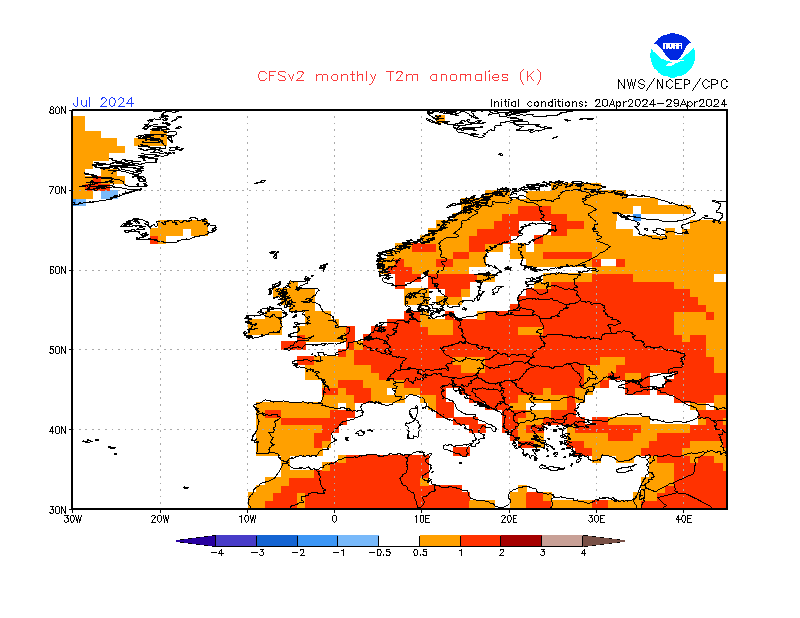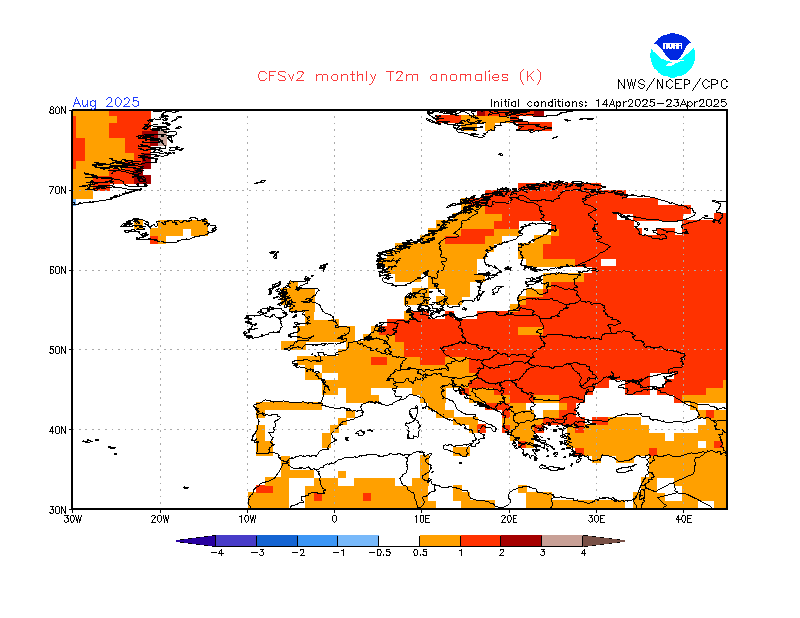At the bottom of January 31's "Simultaneous harvest failures in key regions would bring global famine, says the Met Office" I felt bad because it was a two year old repost with not much new added so I inserted:
...Glad to see the "probably a couple years from this concern even becoming a possibility" turned out to be accurate but there are a few things starting to get one's attention.
Here's a little Easter egg for folks who have stuck with me this far: Hot, maybe very hot in Central and Eastern Europe for the summer of 2021.
See "Die Dürre in Mitteleuropa 1540" for a possible historical comparison.
Here are a couple different approaches that seem to come to the same conclusion re: Mitteleuropa.
First up, From NOAA's Climate Prediction Center a model that has been showing what the modelers call skill for a couple years now, the CFSv2 monthly temperature anomalies measured at two metres:


And from Severe Weather EU, December 28, 2021:
Ocean analysis reveals 2 anomalies that will impact weather development as we head into the new year, influencing the USA tornado season and Summer in Europe
Ocean and Atmosphere are strongly related and interconnected. Together they form the basis of our complex climate system. Current trends in the Ocean temperature anomalies indicate a potentially important effect on the Severe weather season in the United States and even Summer in Europe.
Global oceans cover 71% of the Earth’s surface and contain 97% of the Earth’s water. They play a crucial role in global atmospheric circulation and climate, impacting our weather in a major way.
First, we will look at the global ocean temperature anomalies. This easily shows us where in the ocean the waters are warmer/colder than the long term average (1982-2010).
We can see in the image below, that much of the globe has above-average ocean temperatures. What stands out is the ENSO region, with its cold La Nina phase currently ongoing.
Another feature that stands out, is the warmer than normal North Pacific ocean. Especially the eastern side, with its unofficially named “warm-blob”.
Also important is the North Atlantic ocean. The far northern regions are colder than normal, with the Gulf stream region running abnormally warm....
*****
....So, why is the temperature of the North Atlantic ocean important? Because there is a known connection between colder subpolar North Atlantic ocean temperatures and summer heatwaves in Europe.....
....MUCH MORE
The model he is using, from the European Centre for Medium-Range Weather Forecasts actually has the heat for the period March, April, May shifted east to Belarus, Ukraine, and the Caspian Sea (which will exacerbate its disappearance among other things)